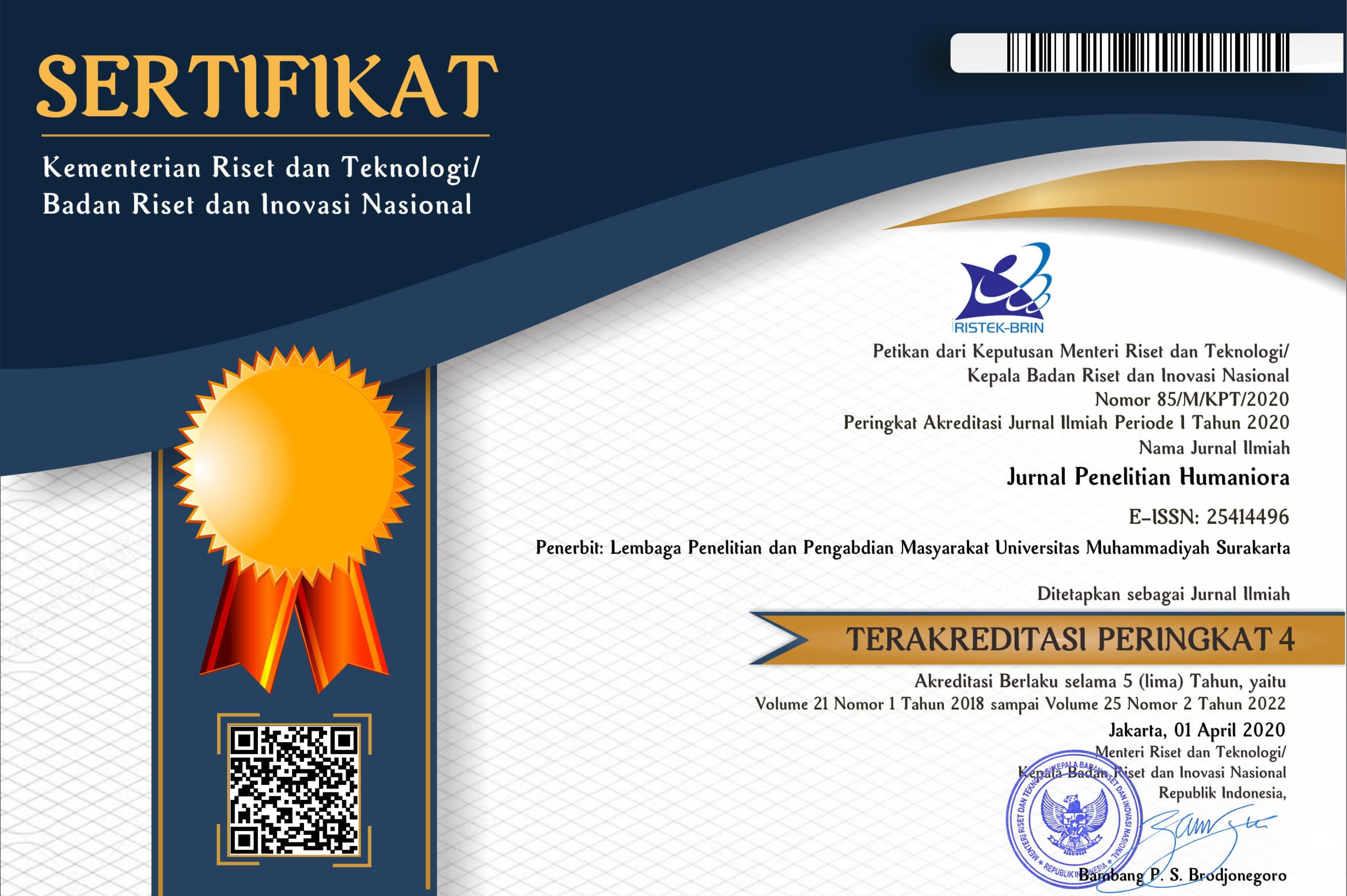BENTUK TES TOEFL UNTUK MAHASISWA UNIVERSITAS KALTARA: STUDI KUALITATIF
Aries Utomo(1*), Puardmi Damayanti(2)(1) Kaltara University
(2) Kaltara University
(*) Corresponding Author
Abstract
Keywords
Full Text:
PDFReferences
Borg, Walter R., Gall, J.P., and Gall, M.D. (2003). Educational Research; An Introduction (7th Edition). New York: Longman.
Genius Edukasi. (2015). Perbedaan Jenis TOEFL PBT, CBT, dan IBT. Dikutip dari http://www.geniusedukasi.com/perbedaan-jenis-toefl-pbt-cbt-ibt/
Harmer, Jeremy. (2001). The Practice of English Language Teaching (3rd Edition). New York: Longman.
Ma, Jia & Cheng, Liying. (2015). Chinese Students’ Perceptions of the Value of Test Preparation Courses for the TOEFL IBT: Merit, Worth, and Significance. TESL Canada Journal/Revue TESL Du Canada Vol.33, Issuse 1, 2015. Pp. 58-79.
Moleong, Lexy J. (2014). Metode Penelitian Kualitatif (Edisi Revisi). Bandung: Rosda.
Oshima, Alice & Houge, Ann. (1997). Introduction to Academic Writing. New York: Longman.
Philips, Deborah. (2001). Longman Complete Course for the TOEFL Test. New York: Longman.
Saafin, Saleh. (2014). Different Performance of EFL University Students on TOEFL and IELTS. AWEJ Volume 5 Number. 1, 2014. Pp.79-88.
Snow, Catherine E. 2002. Reading for Understanding. Pittsburgh: RAND.
Stafford-Yilamz, Lynn & Zwier, Lawrence J. (2005). 400 Must-Have Words for the TOEFL. New York: The McGraw-Hill Companies, Inc.
Sucahyo, Sari Agung. (2016). Peta Nilai TOEFL Mahasiswa Program Studi Pendidikan Bahasa Inggris Institut Agama Islam Negeri Samarinda. Fenomena, Volume 8, No. 1, 2016. Pp. 101-109.
Sugeng, B., Saleh, Sahaini M., dan Suharto, G. (2012). Penguasaan Bahasa Inggris Mahasiswa Baru UNY Tahun Akademik 2005/2006 – 2009/2010 pada Kriteria TOEFL-Like, Volume 11, No.2, 2012. Pp.189-203.
Sugiyono. (2013). Metode Penelitian Pendidikan: Pendekatan Kuantitatif, Kualitatif, and R&D. Bandung: Alfabeta Publisher.
Sukur, Silvester Goridus. (2013) Magic Trick TOEFL ITP: Magic Trick Menyelesaikan Soal-Soal TOEFL ITP ala Sang Pakar. Yogyakarta: Kalarana Press.
Article Metrics
Abstract view(s): 2608 time(s)PDF: 2791 time(s)











